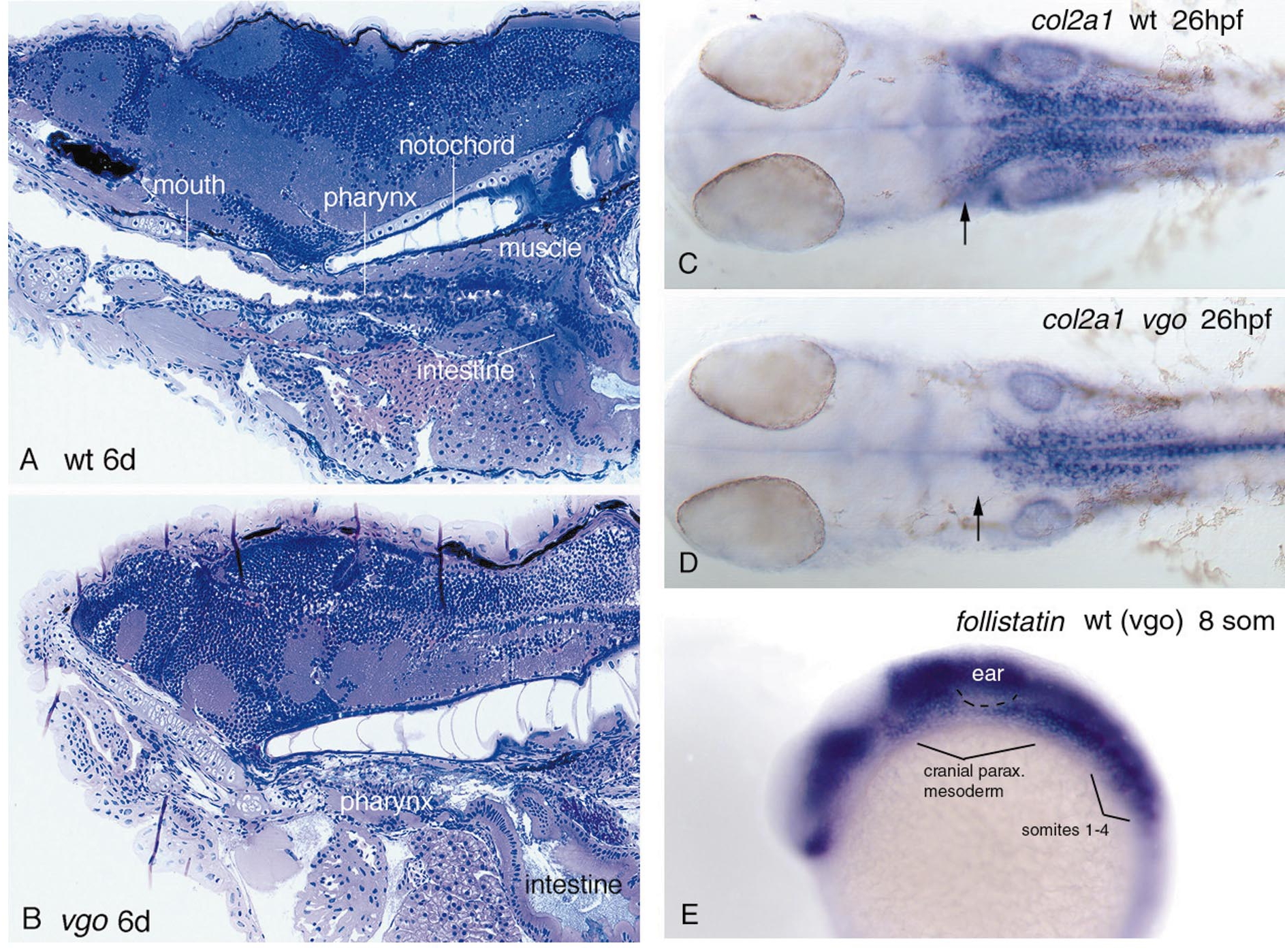Fig. 12 Mesodermal defects in vgo. Sagittal sections through a 6-dpf wild-type sibling (A) and a vgo mutant larvae (B). In the wild-type larva the mouth forms a connection with the pharynx and the intestine (A). In vgo (B), the intestine develops normally but the pharyngeal endoderm does not form a tube and no connection between the mouth and the digestive tract exists. Muscles ventral to the notochord in the dorsal roof of the pharynx are also very much reduced compared to wild type. In vgo the notochord reaches farther anterior than in wild-type siblings, which is caused by a reduction in the growth rate of the pharyngeal region. (C and D) 26-hpf embryos stained with col2a1. In vgo (D) the mesenchyme that gives rise to the parachordalia of the neurocranium is reduced (arrows), whereas the anterior tip of the notochord is still at the same position as in the wild-type siblings. (E) The cranial paraxial mesoderm is not reduced in 8-somite vgo embryos as revealed by identical follistatin expression in all embryos of a clutch coming from vgo heterozygote parents.
Reprinted from Developmental Biology, 225(2), Piotrowski, T. and Nüsslein-Volhard, C., The endoderm plays an important role in patterning the segmented pharyngeal region in zebrafish (Danio rerio), 339-356, Copyright (2000) with permission from Elsevier. Full text @ Dev. Biol.

